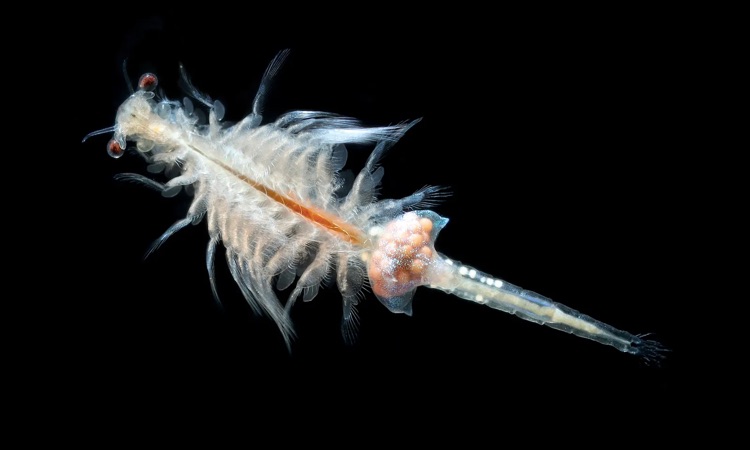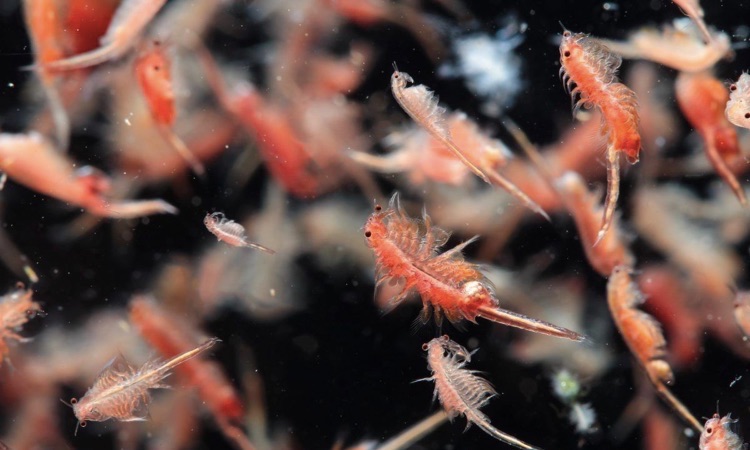Did you know that brine shrimps are actually the same as “sea monkeys”? These tiny creatures (around 15mm or 0.6 inches) are crustaceans, not shrimp, and have 19 body segments with 11 pairs of legs. They also have two types of eyes and can defensively drop body parts like a lizard losing its tail.
Brine shrimp eggs, or cysts, can remain inactive for years until the conditions around them are ideal for hatching. These creatures have been known to survive space travel, exposure to radiation, and complete dehydration.
Did you know that brine shrimp can survive in water that is up to 50% salinity? For perspective, ocean water is only around 3.5% salinity.
On top of all that, they have been around virtually unchanged for around 100 million years! Needless to say, brine shrimps are tough little creatures!

What Do Brine Shrimp Like to Eat?
Because brine shrimp live in high-salinity settings like the Great Salt Lake, they don’t have to compete with other animals for food.
These creatures eat small algae that they filter from the water. The truth is, most living organisms can’t survive in saltwater environments because it’s too harsh.
If you’re keeping brine shrimp in captivity, you’ll need to feed them a diet rich in nutrients. Some good options include egg yolks, spirulina powder, soybean powder, and yeast.
Brine shrimp will pretty much eat anything that’s small enough for them to consume. Keep in mind that their natural food source is microscopic, so they require food that consists of extremely fine particles.
How long can Brine Shrimp Survive without Food?
Brine shrimp only have a short life span, so it is important to make sure they are properly taken care of. If you do not feed them regularly, they will die. To avoid this waste, be sure to give them small bits of food on a daily basis.
Creating a habit of feeding your fish every day is ideal. If you’ll be gone for more than 24 hours, increase the amount of food so there’s enough to last until you return. And when you do come back, check the water quality as extra food can sometimes cause problems.

How to Care for Brine Shrimp
Brine shrimp can be used to feed tropical fish at any stage of their development. When brine shrimp are first born, they do not need to be fed for the first 24 hours because their digestive system is not yet fully developed.
Like ghost shrimp, brine shrimp are not fussy eaters and will practically consume any type of food, some examples being whey, yeast, commercial fry food, soybean powder, wheat flour, fish meal, and egg yolk.
It’s essential that the food you give to your brine shrimp is easy for them to digest but not water-soluble, which is why using powdered milk isn’t an option. You should also avoid overfeeding them as this can harm the quality of water in their tank.


